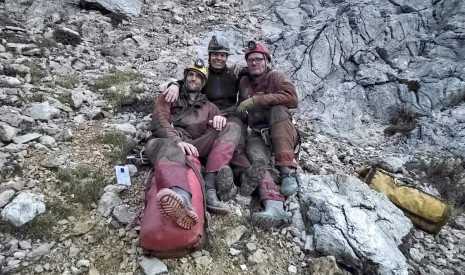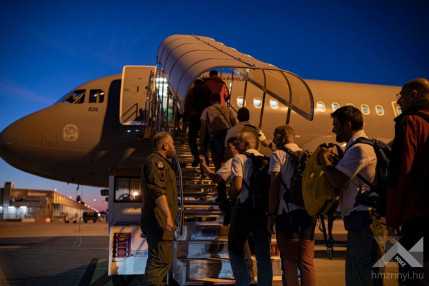Rescue operation in the deep
Text: Eszter Bányász | Photo: archive recording of László Kertész, BMSZ | 12:30 September 13, 2023“It has never been necessary to carry out a rescue operation at such a depth (1,040 meters, 3,400 feet) before”, said Ms Zsófia Zádor, a medical doctor of the Hungarian Cave Rescue Service (in the centre of the headline photo), who returned to the surface on Sunday, 10th September, after spending seven days in the Morca cave in southern Turkey. Most members of the rescue team arrived at the scene as fast as possible on board the Airbus A319 transport aircraft of the Hungarian Defence Forces.

As previously reported, Mark Dickey, the renowned American speleologist, had fallen ill in Turkey, and Dr. Zádor proved to be the first instantaneously deployable medical doctor in Europe able to go down to a depth of 1,040 meters. Of course, it was also vital that the rest of the rescue team get to the scene as quickly as possible – the Airbus A319 transport aircraft of the Hungarian Defence Forces helped with this task.
When you get an alert or a call for help, how much time do you have to prepare to go?
It depends on that particular case; obviously longer time was available here due to the need for diplomatic permissions. I was alerted at 7:30 a.m. on Sunday and left Hungary at 8:30 p.m., so I had a total of thirteen hours at my disposal. Since we are members of a volunteer organization, there is no specific time when we have to be ready after the acceptance of the alert but we always try to organize our departure as soon as possible.

As the first team to arrive at the location, what difficulties did you have to deal with?
First of all, we had to wait to get a permission to enter Turkey, and we had to obtain the necessary equipment for treating the patient and carrying out the rescue operation. Obviously, descending to 1,000 meters is not an easy job in a cave, it requires a lot of experience, but fortunately, all three of us who descended in the first round were seasoned enough.
How did you manage to stabilize the condition of the American speleologist?
By the time I arrived, a paramedic had already been on the scene, who had given the patient an infusion and been able to somewhat control the acidity of his stomach. As there has been no diagnosis yet, we do not know for sure what the problem was, but we first suspected a stomach ulcer, which started bleeding. I continued the initial therapy and when the blood products arrived, I performed a blood transfusion on the patient after the medication.

What was the biggest challenge during the rescue?
It was the simple fact that the patient was very far from the surface. In addition, his extraction required a lot of equipment and a lot of energy – the management of all these factors posed a serious challenge.
How routine is this rescue operation?
In fact, there has never been a case in history where someone had to be rescued from such a depth. The record so far was the rescue carried out in the Riesending cave, Germany, in 2014, where a researcher with a skull injury had to be brought to the surface. However, internal diseases similar to the current one occur relatively rarely in caves, especially at such a depth. There limb injuries and injuries resulting from technical accidents are much more common.
* * *
According to a recent post published on the social media site of the Hungarian Cave Rescue Service, Mark Dickey could be brought to the surface at dawn on Tuesday, 12th September, as a result of 58.5 hours of hard work; with the help of nearly 200 on-site cave rescuers from ten different countries; with the involvement of many helpers as a single united team all working in the framework of huge international cooperation!